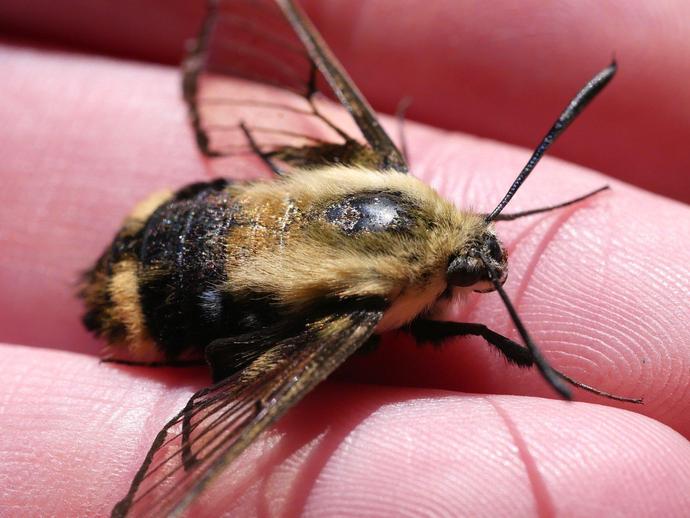April 26, 2021
It's time for today's edition of #BenInNature presented by our friends at Carter Bank & Trust!
#BenInNature superfans may recognize this species from a post last year, but it's cool enough that I think it's worth looking at again (especially since I got a photo of one perched on my hand like a Disney princess). This is Hemaris diffinis, the snowberry clearwing!
While they're at rest, these critters look a lot like carpenter bees, and while they're flying, they look a lot like hummingbirds. However, the snowberry clearwing is actually a moth, and they're popularly referred to as "hummingbird moths!"
Unlike most moths, this species is active during the day and can often be seen flitting from one flower to the next (if you want to attract them, some of their favorite flowers are bee balm, phlox, verbena, and honeysuckle). They can be found throughout much of the U.S. and many parts of Canada.
There are 23 different species of clearwing moths in the genus Hemaris, all of which have ... you know ... clear wings. When they first go through eclosion, which is the process of an insect emerging from a pupa as an adult, these wings actually have scales on them just like those on the wings of other moths. However, these moths beat their wings so rapidly that the scales fall off over time. While hummingbirds beat their wings at around 50 beats per second, some clearwing moths beat their wings at 85 beats per second!
There are usually two generations of snowberry clearwings per year in the southern part of their range, and you can spot them on the wing from March through August. Keep an eye out when you're in the garden!
ABOUT #BenInNature
Social distancing can be difficult, but it presents a great opportunity to become reacquainted with nature. In this series of posts, Administrator of Science Ben Williams ventures outdoors to record a snapshot of the unique sights that can be found in the natural world. New updates are posted Monday - Friday, with previous posts highlighted on the weekends. This series of posts is made possible thanks to the support of VMNH Corporate Partner Carter Bank & Trust (www.cbtcares.com).
NATURE PHOTO IDENTIFICATIONS
If you discover something in nature that you would like help identifying, be sure to message us right here on Facebook with a picture (please include location and date of picture) and we'll have our experts help you identify it!

 Hours & Admissions
Hours & Admissions Directions
Directions

